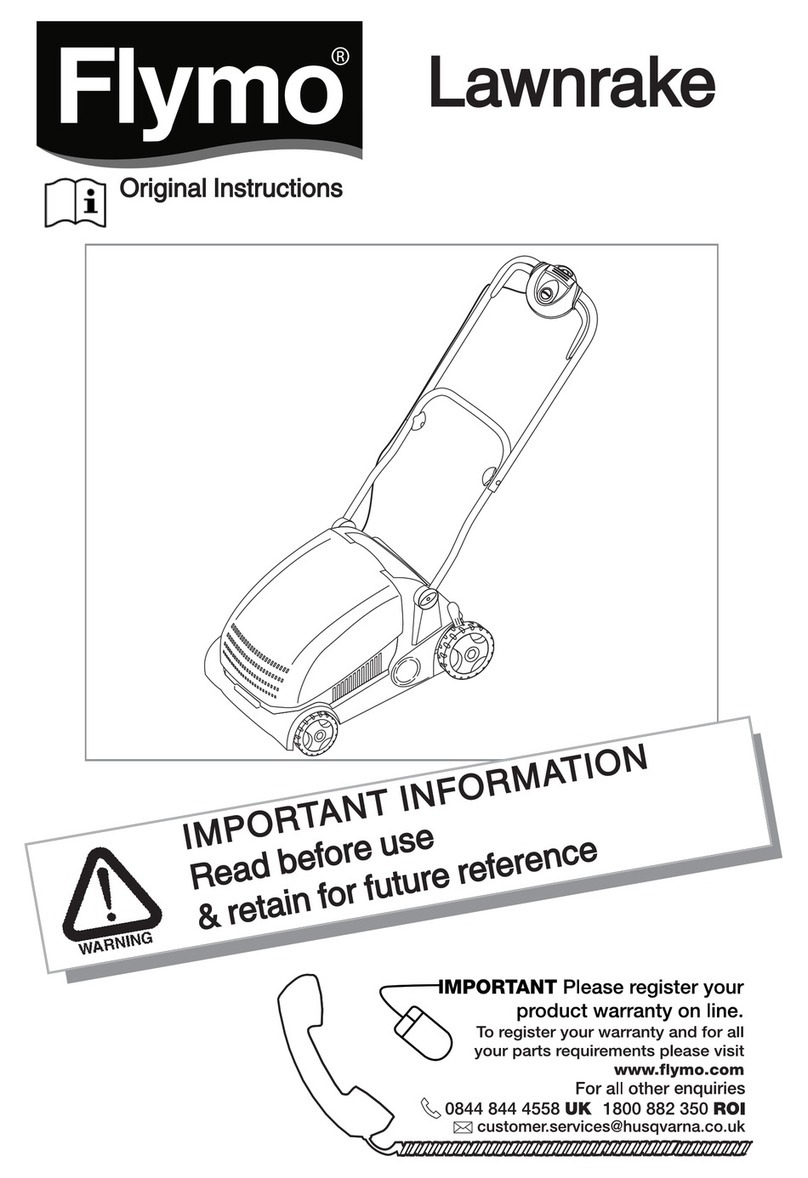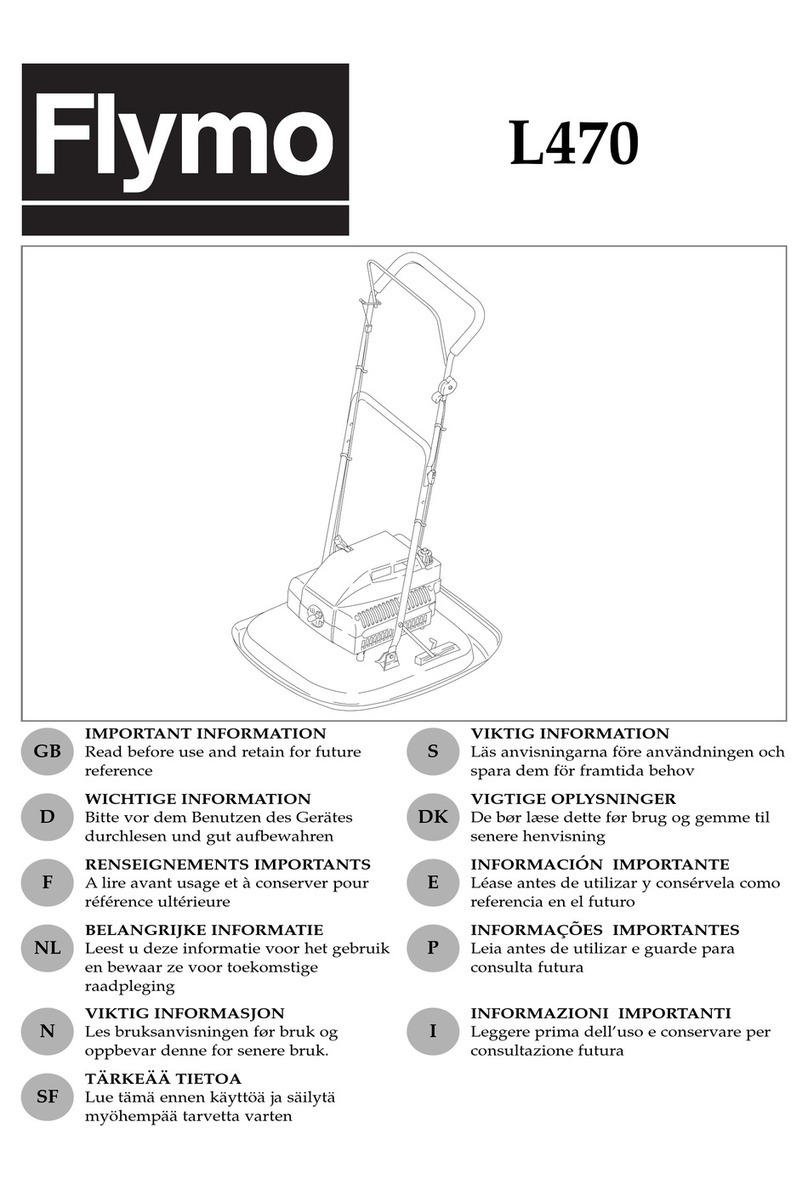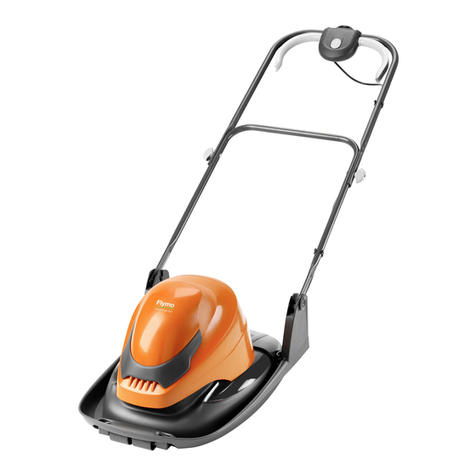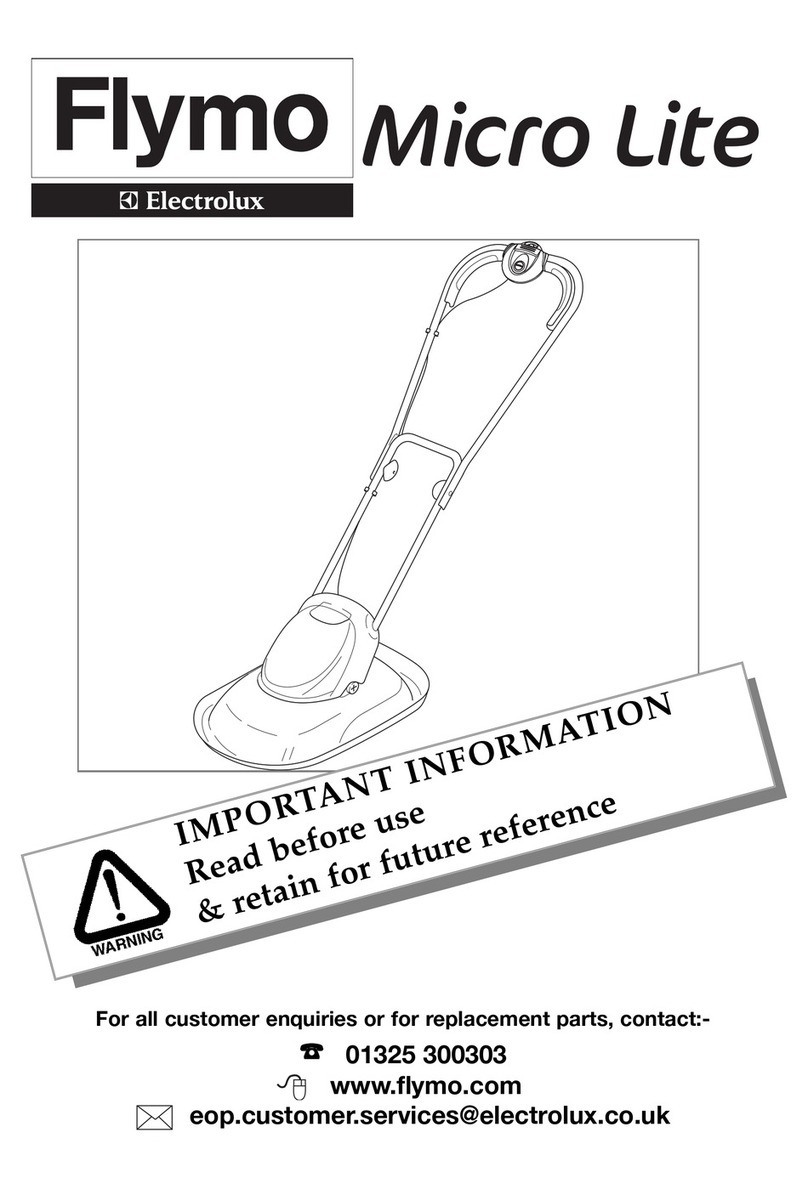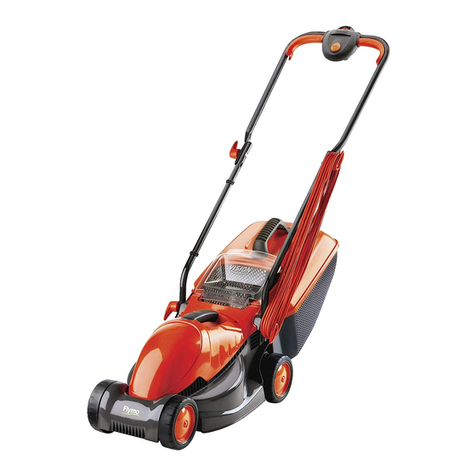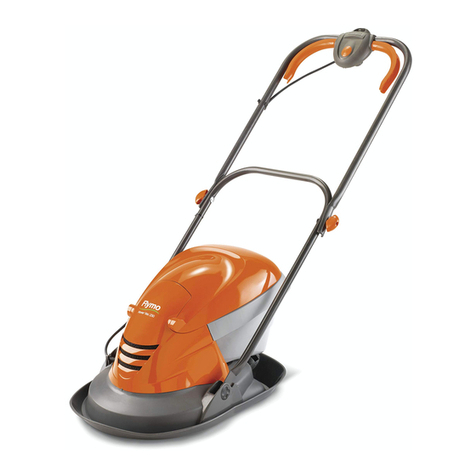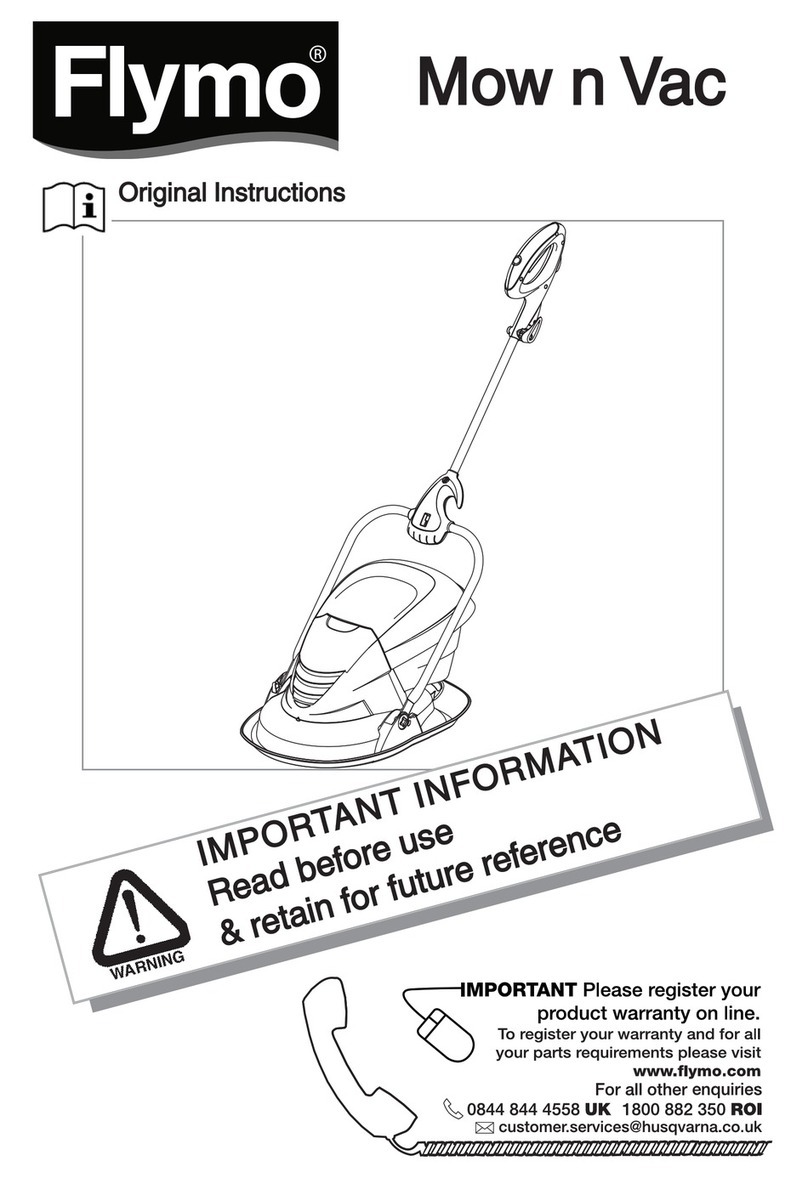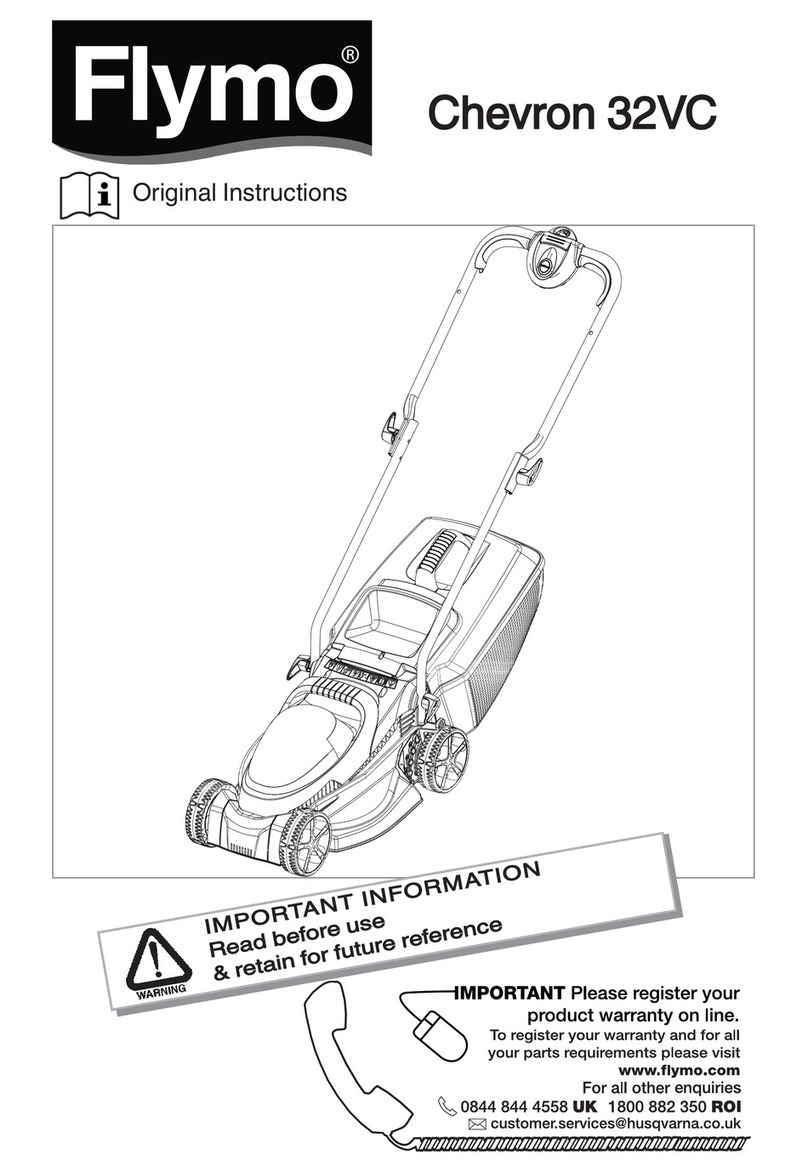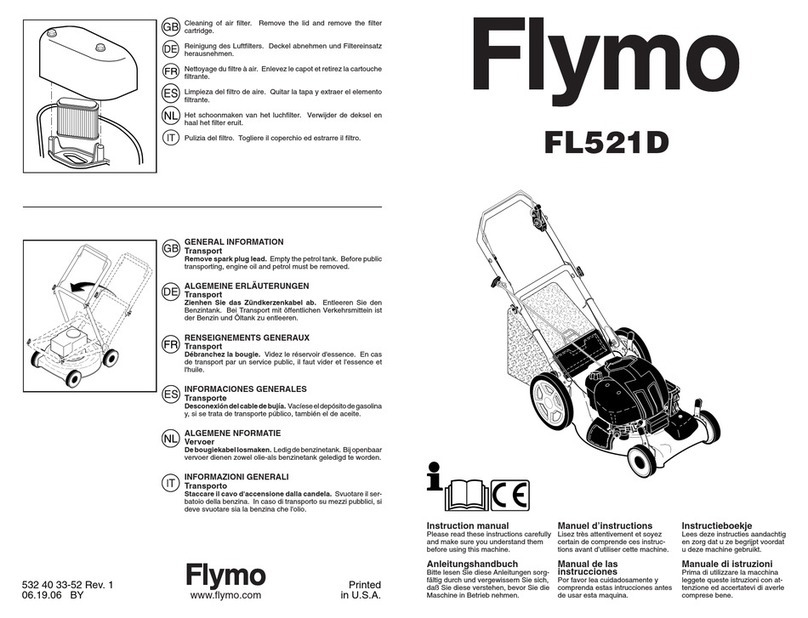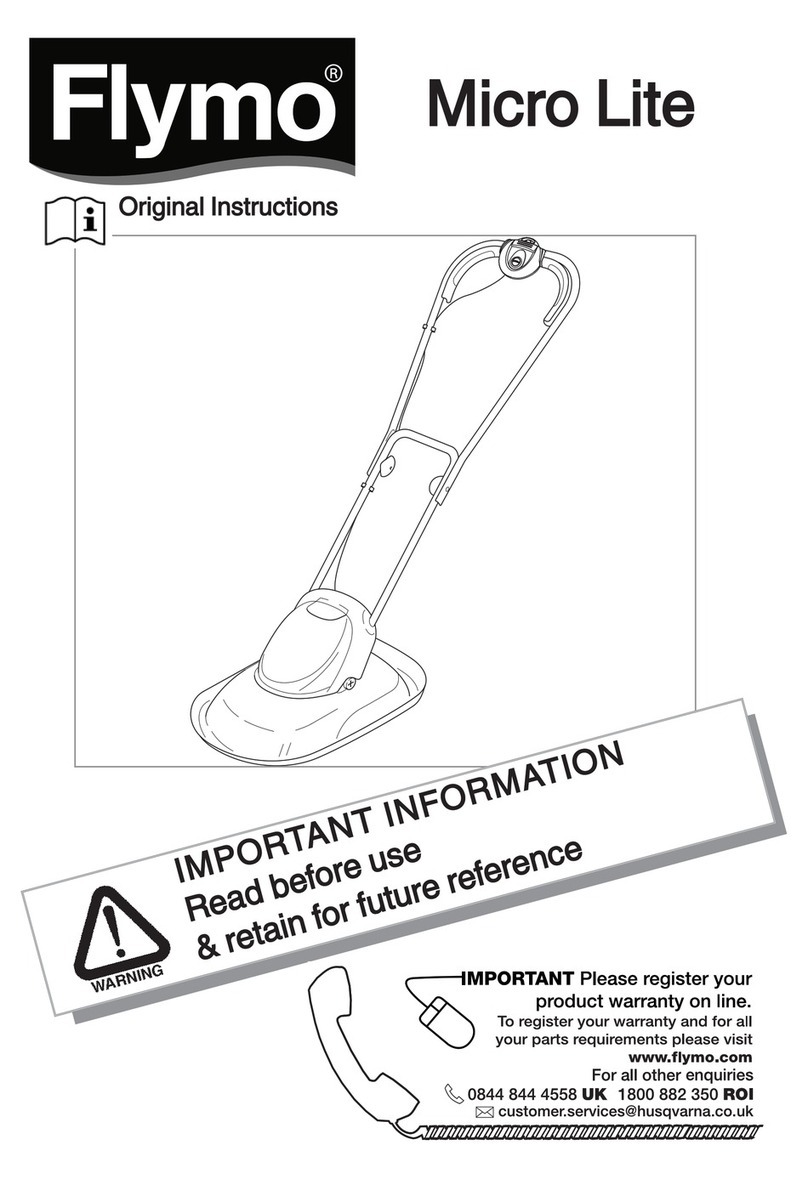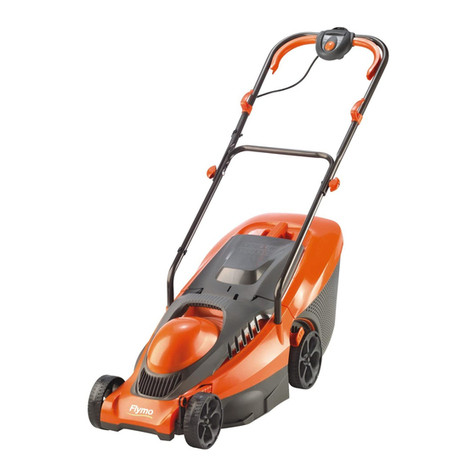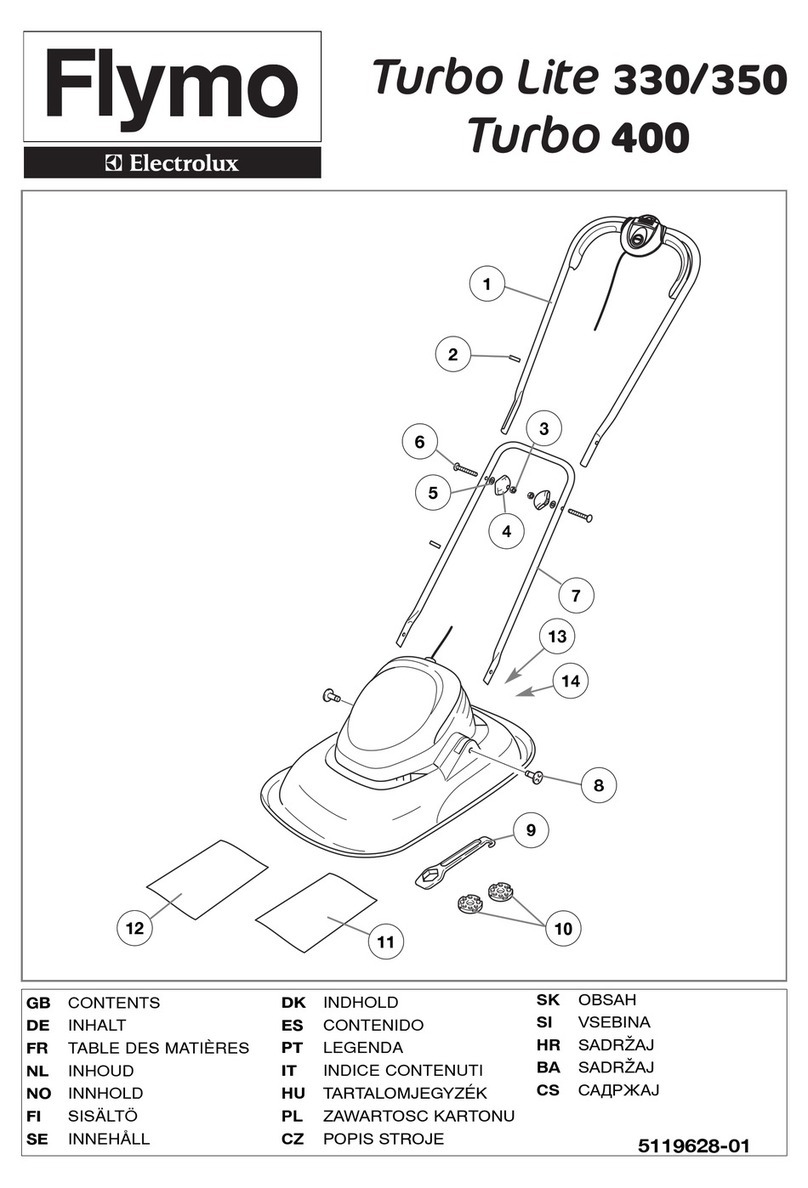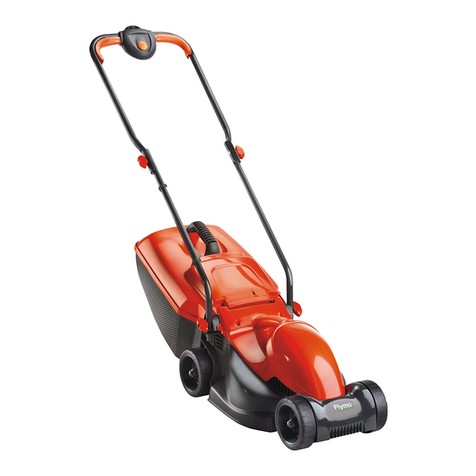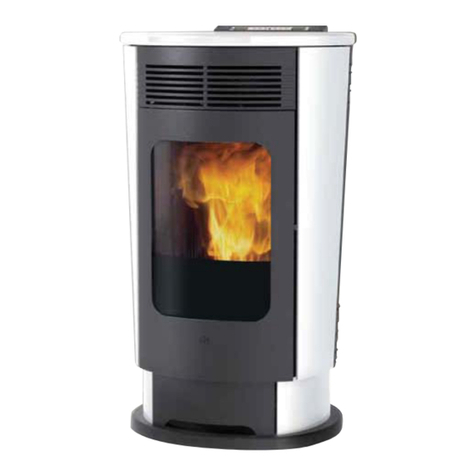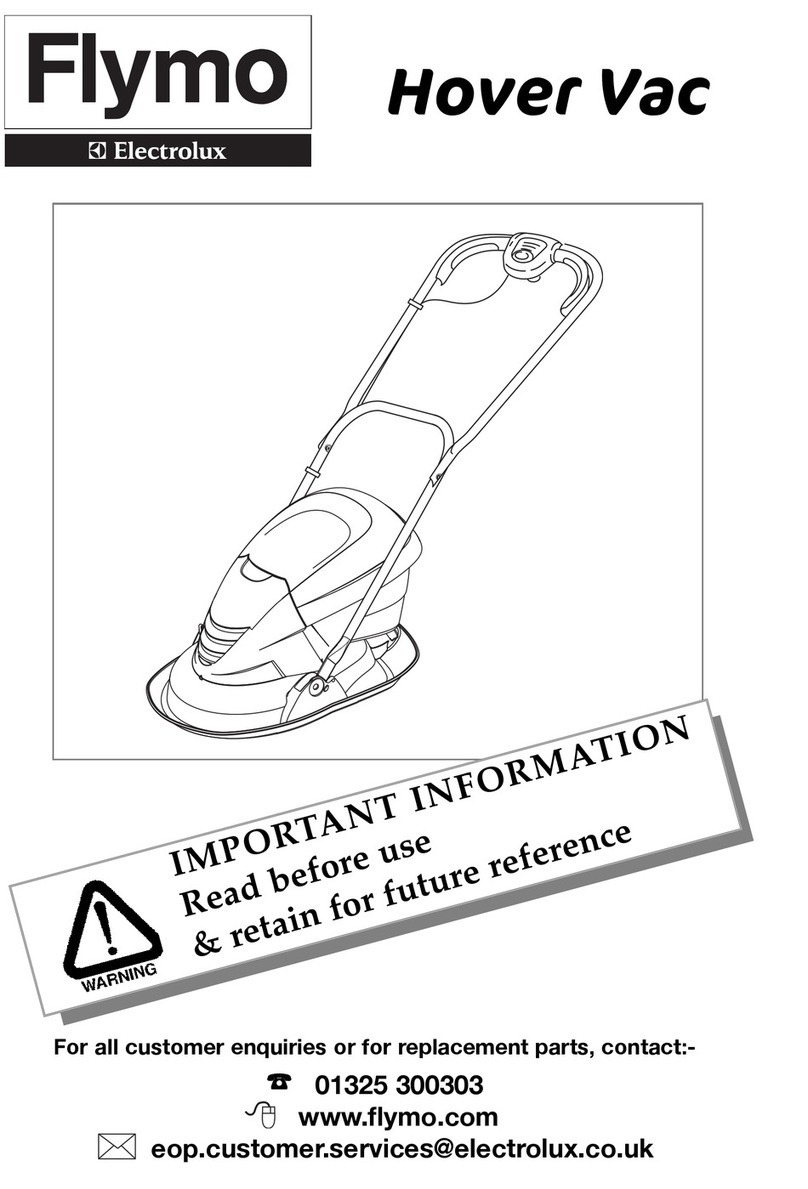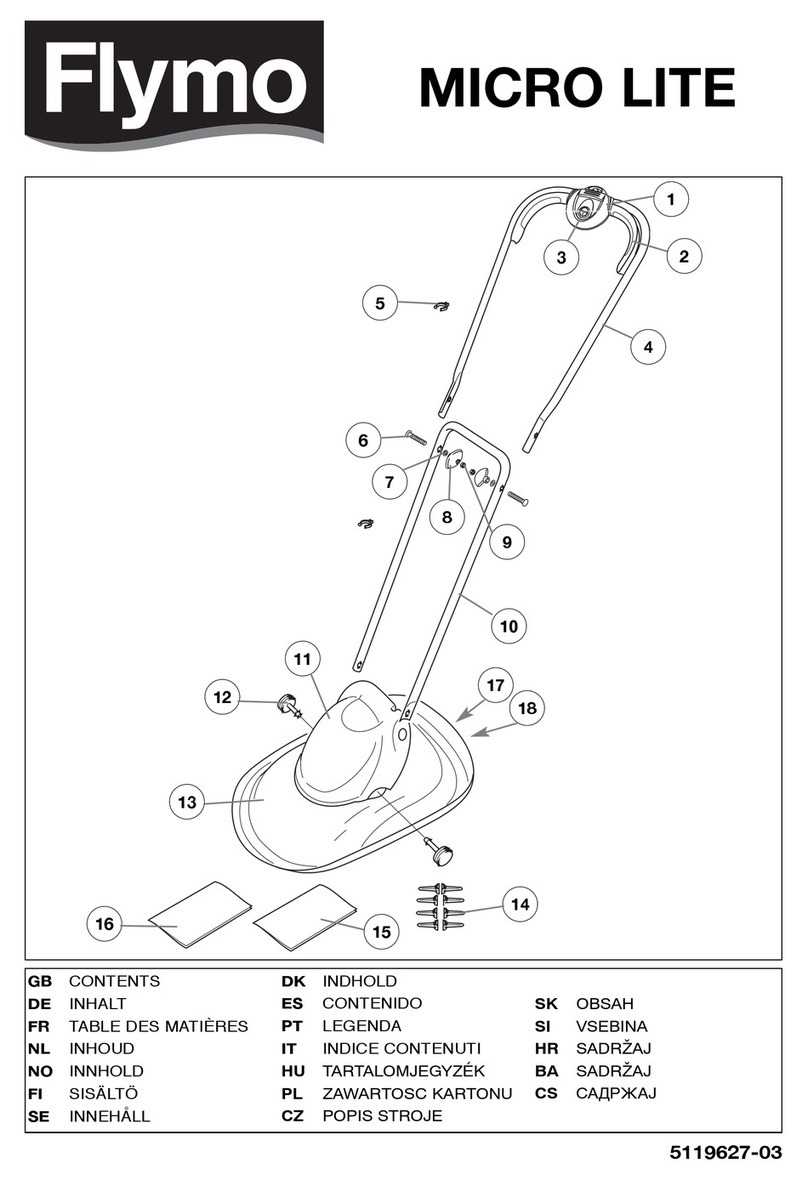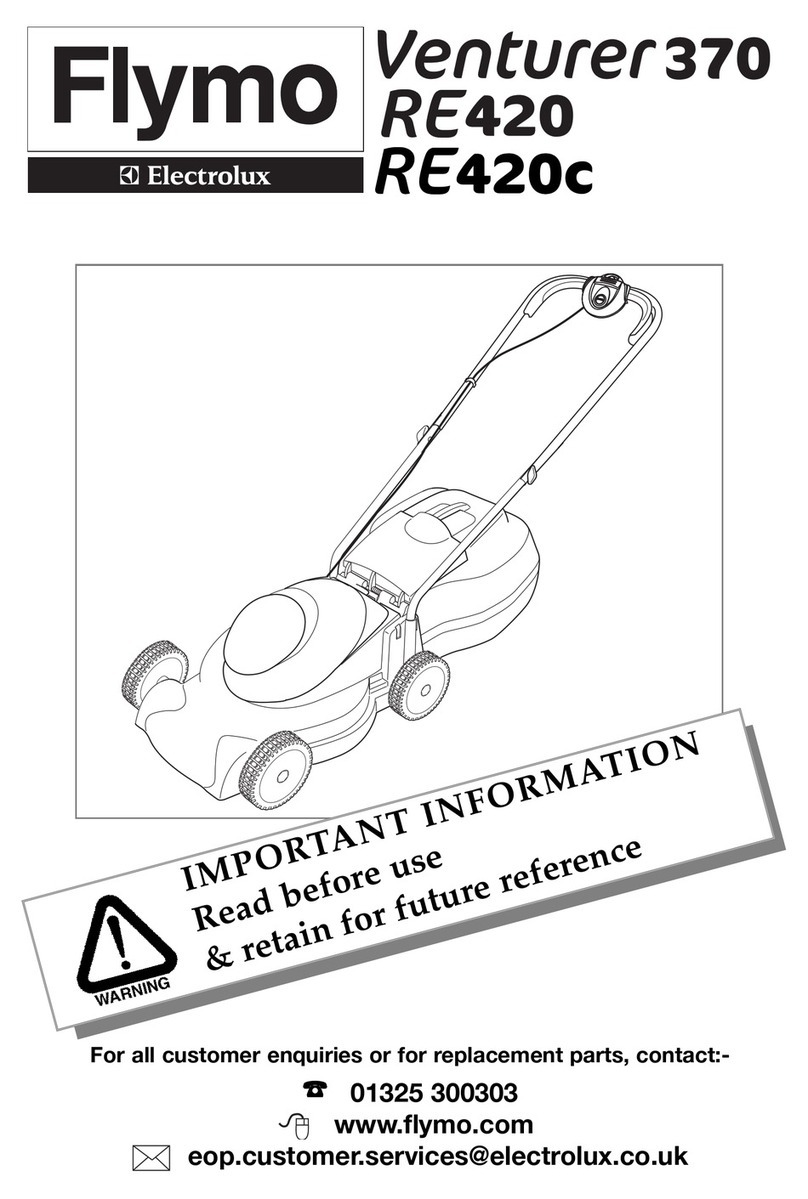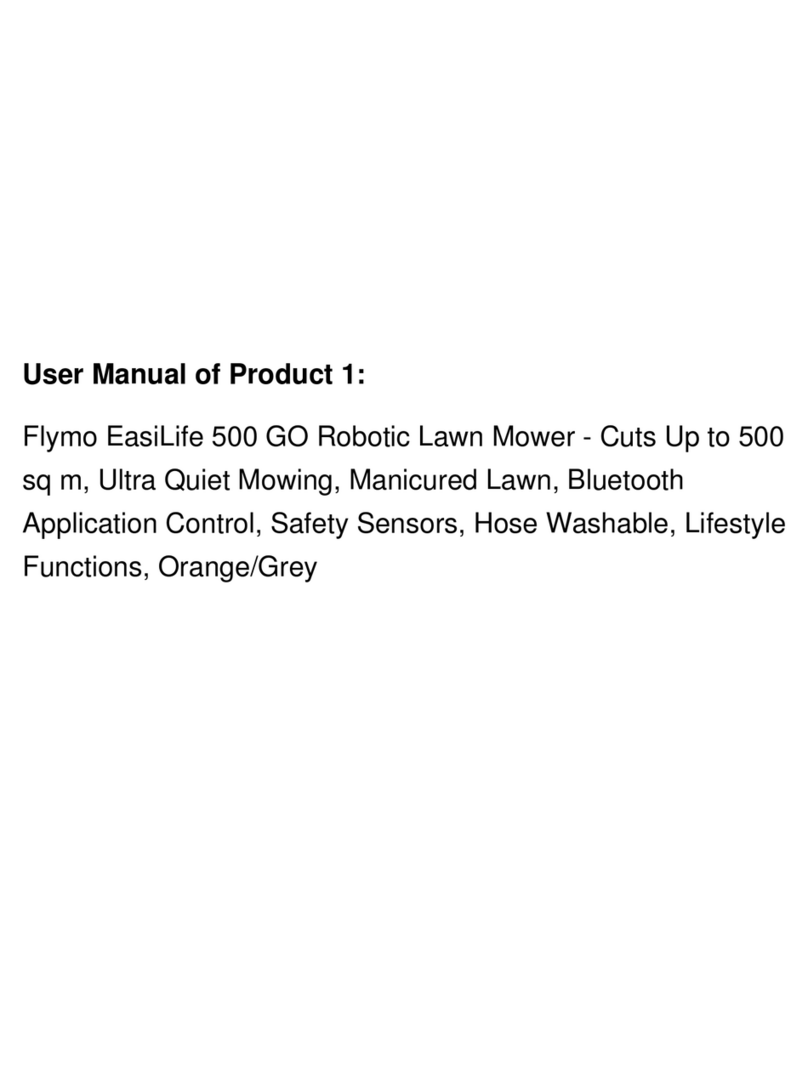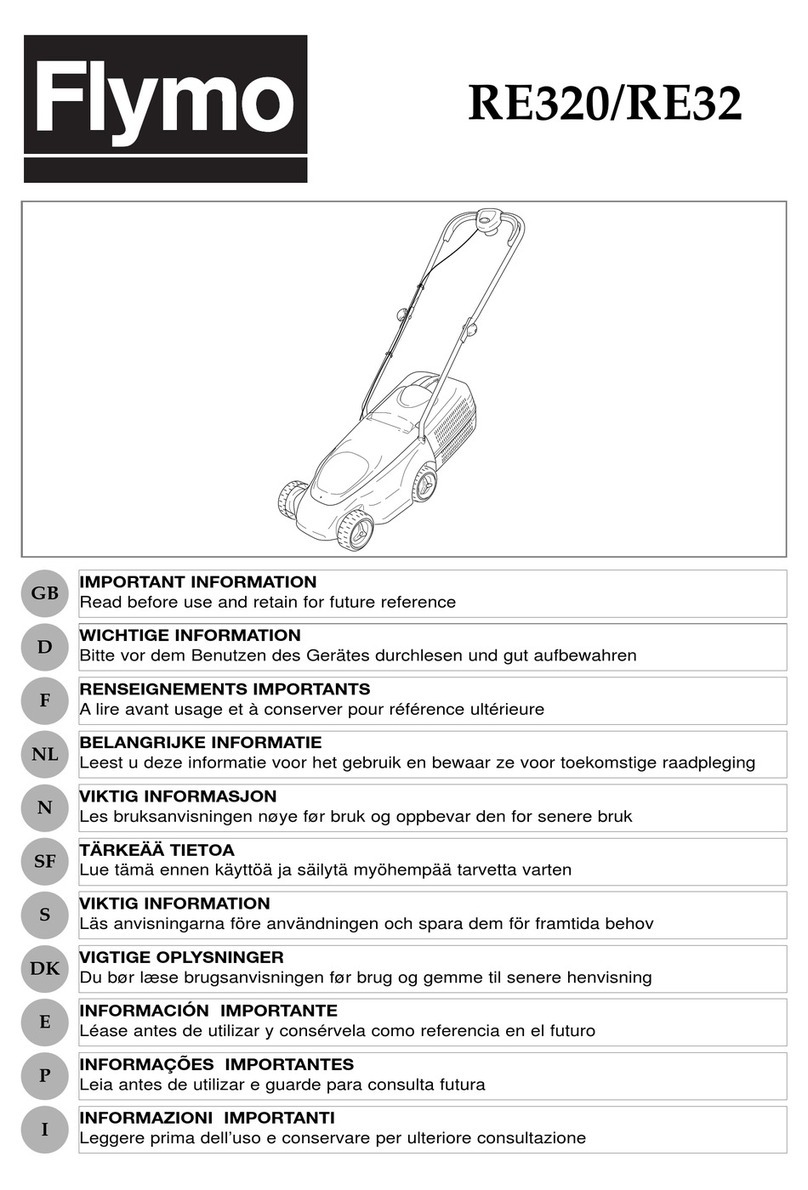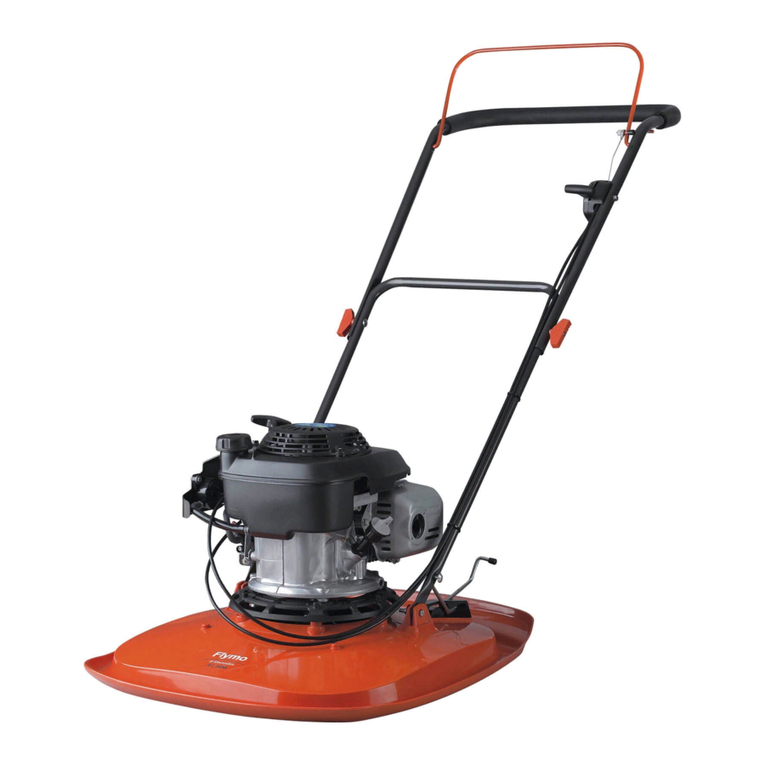2 Safety
2.1 Safety definitions
Warnings, cautions and notes are used to point out
specially important parts of the manual.
WARNING: Used if there is a risk of
injury or death for the operator or bystanders
if the instructions in the manual are not
obeyed.
CAUTION: Used if there is a risk of
damage to the product, other materials or
the adjacent area if the instructions in the
manual are not obeyed.
Note: Used to give more information that is necessary
in a given situation.
2.2 General safety instructions
WARNING: Read the warning
instructions that follow before you use the
product.
• Read the Operator’s manual carefully and make
sure you understand the instructions before you
use the product. Keep for future reference.
• This appliance is not intended for use by children
or persons with reduced physical, sensory or
mental capabilities (that could affect a safe
handling of the product), or lack of experience
and knowledge, unless they have been given
supervision or instruction concerning use of the
appliance by a person responsible for their safety.
However, EU requirements allows this appliance
to be used by children aged from 8 years and
above and persons with reduced physical, sensory
or mental capabilities or lack of experience and
knowledge, if they have been given supervision
or instruction concerning use of the appliance in
a safe way and understand the hazards involved.
Children shall not play with the appliance. Cleaning
and user maintenance shall not be made by
children without supervision.
• The product must only be used with the equipment
recommended by Flymo. All other types of use are
incorrect.
• Do not use the product when persons, especially
children, or animals are in the work area.
• Warning signs must be put around the work area
of the product if it operates in public areas. The
signs must have the text that follows: Warning!
Automatic lawn mower! Keep away from the
machine! Supervise children!
• Do not touch moving hazardous parts, such as the
blade disc, before it has come to a complete stop.
• Set the product to OFF before you clear a
blockage, do maintenance or examine the product,
and if the product starts to vibrate abnormally.
Examine the product for damage before you start
the product again. Do not use the product to it is
defective.
• If an injury or accident occur, get medical aid.
• Do not put power supply cable and extension cable
in the work area. This can cause damage to the
cables.
• Do not connect a damaged cable or plug, or touch
a damaged cable, before it is disconnected from
the power outlet. Disconnect the plug from the
power outlet if the cable becomes damaged while
in operation. A worn or damaged cable increases
the risk of electrical shock. A damaged cable must
be replaced by service personnel.
• When you connect the power supply to the power
outlet, use a residual-current device (RCD) with a
tripping current of maximum 30 mA.
• Only charge the product in the included charging
station. For safe disposal of the battery, refer to
Disposal on page 45
. Incorrect use may result in
electric shock, overheating or leaking of corrosive
liquid from the battery. In the event of leakage of
electrolyte, flush with water/neutralizing agent. Get
medical aid if corrosive liquid comes in your eyes.
• Use only original batteries recommended by
Flymo. Product safety cannot be guaranteed with
other than original batteries. Do not use non-
rechargeable batteries.
• Follow the installation instructions that includes to
specify the work area, refer to
Installation on page
13
.
• Follow the instructions about to start and operate
the product, refer to
Operation on page 28
.
• If there is a risk of thunderstorm, Flymo
recommends that the power supply and all the
wires to the charging station are disconnected
to decrease the risk of damage to electrical
components. Connect the power supply and all
the wires again if there is no longer a risk of
thunderstorm. It is important that all wires are
connected correctly.
• Follow the maintenance instructions and if
necessary use Flymo original spare parts, refer to
Maintenance on page 31
.
• For technical data such as weight, dimensions and
noise emission values, refer to
Technical data on
page 46
.
• The operator is responsible for accidents or
dangers that occurs to other persons or property.
10 - Safety 1392 - 007 -

